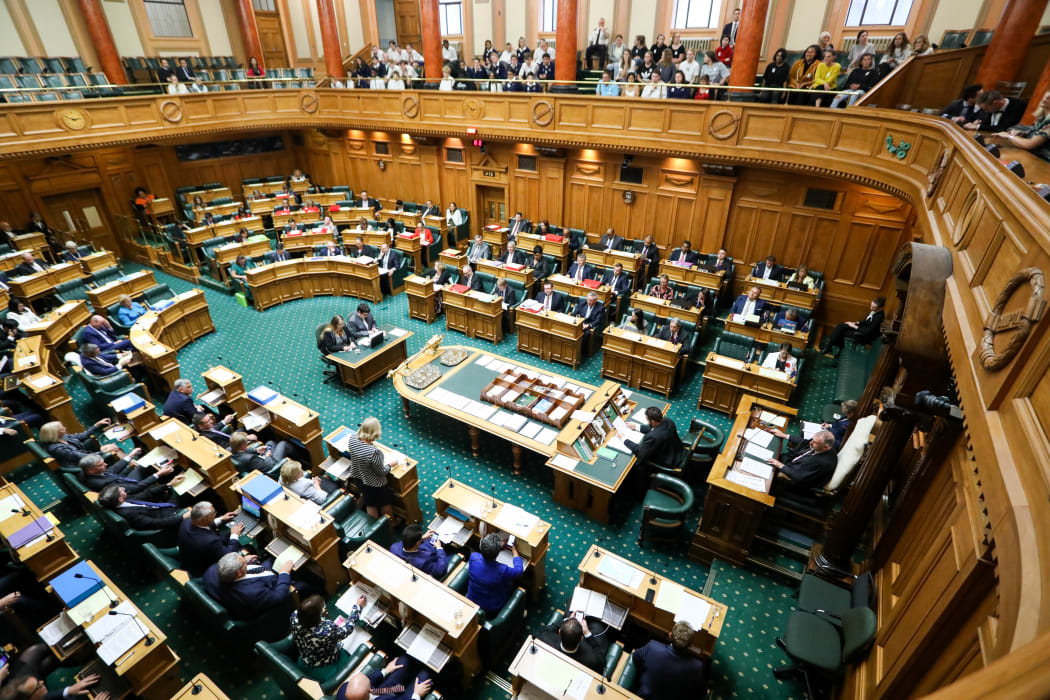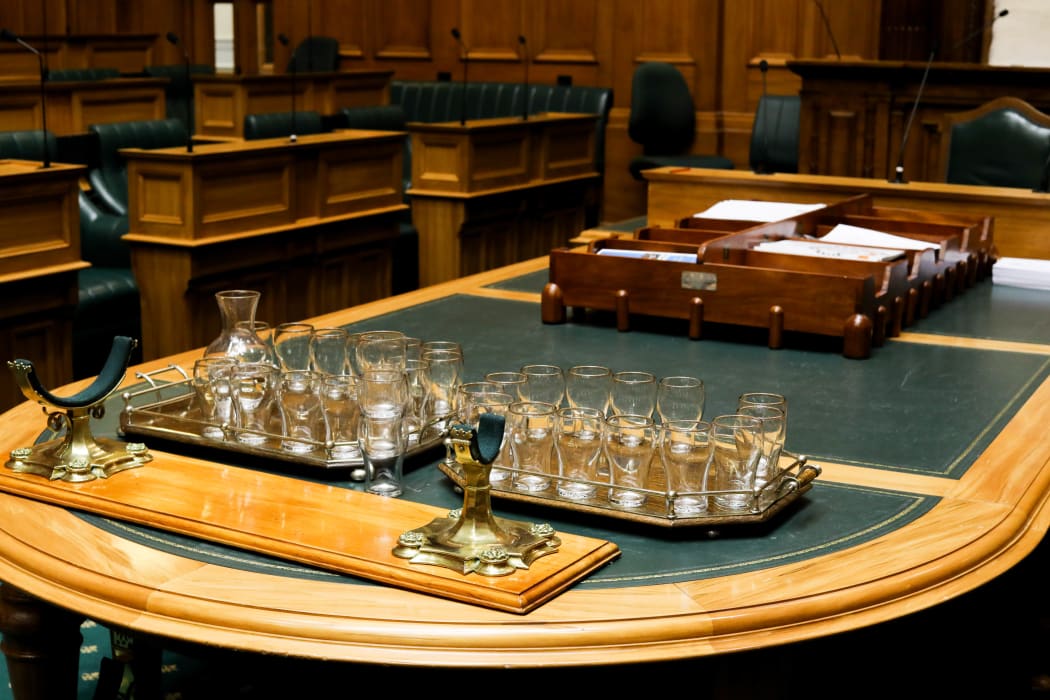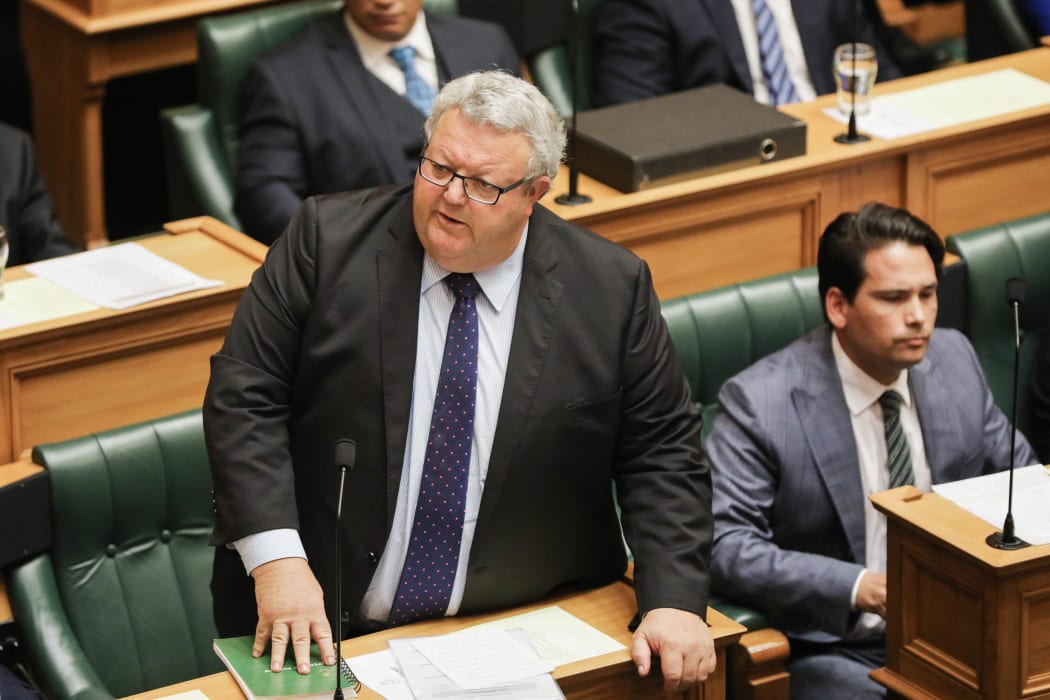In Parliament, the governing side of the House has the numbers to carry the day, but the opposition isn’t without influence. The opposition can, if it wishes, make the government really work for it.
The main way is by filibustering - delaying legislation by debating it for as long as the rules will let you get away with.
Filibustering is within the rules, and time-honoured; and allows the opposition to throw around what weight it has as a register of its disagreement.

The debating chamber of New Zealand's Parliament Photo: VNP / Phil Smith
For example, two pieces of tax legislation (this one and this one) spent much of this week being considered by Parliament in what's called 'the committee stage'. The committee stage is the third of the four debates that legislation has to go through on its way to becoming law.
Due to filibustering these bills spent much of three days in the committee stage despite the Government wanting to get them passed into law by week's end, so as to come into effect when the new financial year kicks off on July 1st. They didn't quite manage that deadline, but should get it passed before July regardless.
So, how does an opposition so successfully put a spoke in the wheels of passing legislation?
It's all about the committee stage. This is when the House is meant to tinker under the bonnet of a bill and see if it can find ways of improving it. It's meant to check that the law will do what it says it will do.
MPs are meant to help make the bill better, more efficient law; even if they disagree with its purpose.
As a result, speeches during the committee stage often sound pretty dry and technical. You could call it the 'boring but important stage'.
The need for tinkering means this stage has different rules. The other three readings have time limits. The committee stage not so much. So it’s the only remaining opportunity under New Zealand’s parliamentary rules for an opposition to effectively filibuster.

The person with the call is the one speaking (unless the chair or Speaker is on their feet). Here it's National's Paul Goldsmith. Photo: VNP / Daniela Maoate-Cox
Use your calls
In the committee stage everyone gets four five minute speeches (calls) on each section of the debate. (The bill is debated in sections or by theme, rather than all at once during this stage.)
So the first and most obvious method is to use as many of those calls as possible, to take as long as possible.
But it’s not easy, because if you start to repeat yourself, the chair might decide that you've run out of new arguments - a sign that there’s been enough debate - and it’s time to take a vote on this section, and move on.
The chair can decide that for themselves or be prompted to do so by an MP saying " I move that the question be now put". Which translates as "I suggest we vote on this now".
After a bit of debate on each section of the bill, the government whips will periodically suggest that surely everything that could be said has been said already. Your side will of course groan and complain at the mere suggestion.
So the second method is...

This is The Table on which proposed amendments get 'tabled'. Amendments proposed in advance are called Supplementary Order Papers (SOPs), otherwise they're 'tabled amendments'. Photo: VNP / Daniela Maoate-Cox
Proposing amendments
Amendments have two advantages - they use up some time themselves - especially the voting on them all. And if you make sure to demand a party vote on each amendment that also uses time.
Even if you suggest amendments that are against the rules, they still have to be ruled as 'out of order', which also takes time.
But crucially, amendments give you something to talk about. And an excuse to keep debating.
Get some cardio
One way of convincing the chair that the debate needs to continue is to always have a number of MPs leaping to their feet asking for a call once the previous MP sits down. There's no forma roster of calls for this stage and anyone wanting to talk just gets to their feet and says "mister/madam chair".
Calls usually oscillate between the two sides of the House, but during this stage the governing side will rise less and less, because they have no incentive to make it look like they still have lots to say.

Gerry Brownlee is National's Leader of the House, the resident party expert on procedure - here pictured with one hand resting on the Standing Orders (rules), just in case. Photo: VNP / Phil Smith
Get pedantic
The third tactic is using procedural motions and other points of order. These all take up time as well. If you're lucky they can even lead to a mini debate within the debate.
There’s an array of options. You might try suggesting changes to the rules for the debate (this should be attempted before the House transforms into the Committee of the Whole House to begin the committee stage). You might complain about the behaviour of other MPs, or point out rules you think are being ignored.
You might also debate the state and conduct of the debate itself. You might even challenge a ruling of the chair and request the return of the Speaker to make a ruling on it. Be very careful with this last one though, because it might be interpreted as trifling with the chair, which may end poorly.
These methods may all help to slow things down and help an opposition 'protest' legislation they feel strongly about. And along the way, hopefully you manage to achieve the purpose of the committee stage, which is to make better law.

